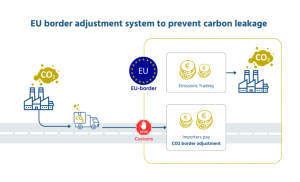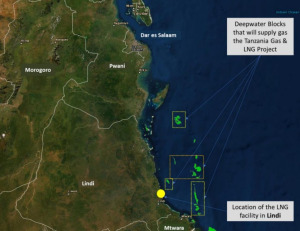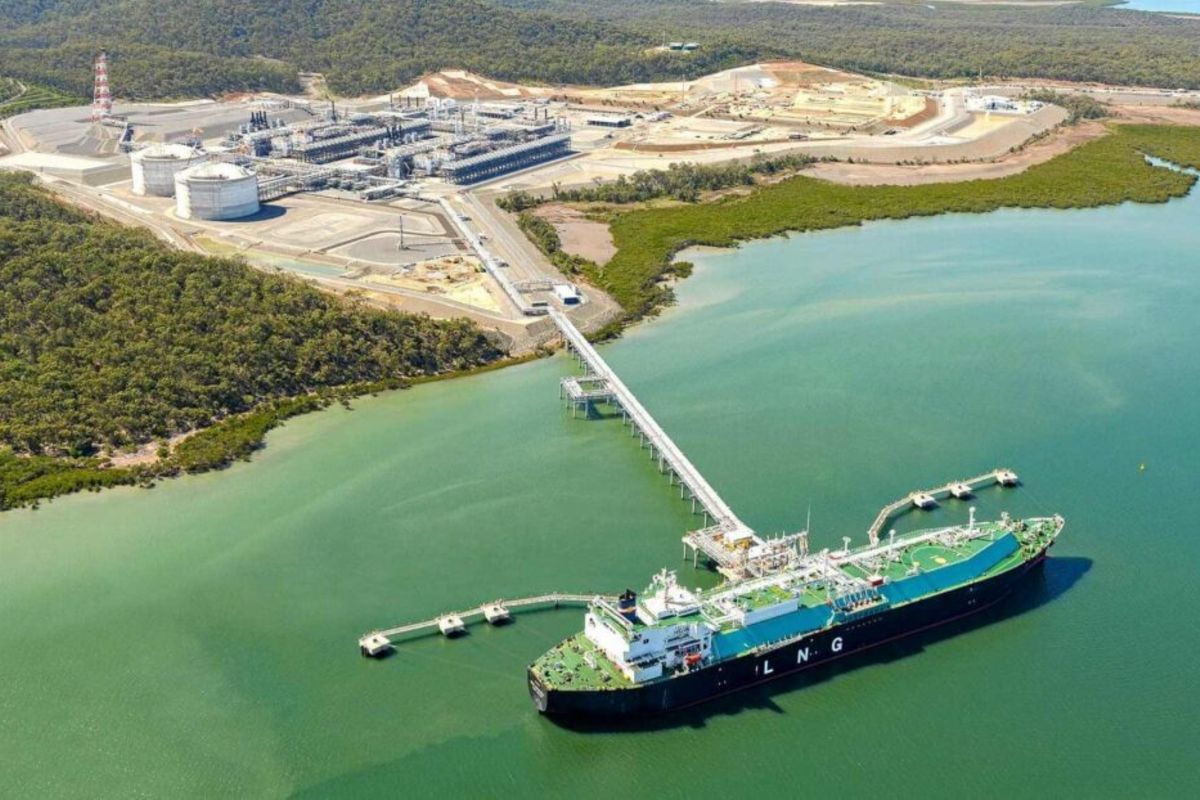Assessing the Impact of the EU’s Carbon Border Tax Adjustment Mechanism on Tanzania’s LNG plans and industrial exports
The European Union’s (EU) proposed Carbon Border Tax Adjustment Mechanism (CBAM) aims to mitigate carbon leakage by imposing a carbon tax on imports of certain commodities that are not taxed internally within the exporter’s country at a comparable level. This policy brief evaluates the potential impact of the CBAM on Tanzania’s promising liquefied natural gas (LNG) project and fossil powered industrial exports. It offers strategic recommendations for mitigating adverse effects and enhancing Tanzania’s export competitiveness.
Author: Dr Lulu O’lang, Researcher and consultant, Governance and Economic Policy Center
Background:
Effective January 2026 the EU Carbon Border Adjustment Mechanisms (CBAM) will come into full force. As it stands, this carbon adjustment mechanism, which seeks to reduce the incentives for firms to outsource their carbon emissions and promote a more generalised low-carbon transition, might disproportionately impact some non-EU economies. Fossil based goods from a non-EU country will be required to pay a carbon fee before entering the EU. Because many of the potentially impacted economies have a low capacity to adapt their productive structure to shift to less-emitting industries or to adopt low-emission cutting-edge technologies(Magacho et al., 2024).
The EU Carbon Border Adjustment Mechanism (CBAM) is the EU’s landmark tool to prevent carbon leakage and support the EU’s increased climate ambitions. It works by putting a price on carbon emitted during the production of carbon-intensive goods entering the EU to incentivise cleaner industrial production in non-EU countries. Carbon leakage refers to the process of shifted production and/or emissions to other jurisdictions with less stringent emission constraints. It is one of the key obstacles for the EU to reach its climate commitments. The CBAM was designed to specifically address this risk.
Carbon leakage can occur when a domestic carbon price negatively impacts the competitiveness of an entity operating in this domestic context.
This increased cost might result in the entity shifting its production to another country with a lower carbon price to reduce production costs. For example, a steel producer might consider relocating its production outside of the EU to avoid paying for the carbon it emits. Another possible instance of carbon leakage occurs when non-domestic producers that are not subject to the price of carbon enjoy significant competitive advantages compared to domestic producers, resulting in a shift of production abroad[1].
The CBAM is also intended to promote more environmentally friendly production methods in third countries. However, the implementation of the CBAM will have far-reaching implications for countries worldwide. Policymakers on both sides of this initiative must carefully consider a multitude of factors, including its impact on EU trade, its potential effects on the well-being of domestic populations, the influence it might have on public opinion, and broader economic relations with the EU. Some early studies indicate that middle and lower-income countries will be more impacted by CBAM. Hence, these countries may need more action from the EU(Sabyrbekov & Overland, 2024).
How it will work: Illustration below courtesy of Ulla Wenderoth; Let me ship:https://www.letmeship.com/en/the-eu-carbon-border-adjustment-mechanism/

Goods covered
The CBAM will initially only be applied to goods with a high potential for carbon leakage: Aluminum, iron, steel, fertiliser, electricity, hydrogen and cement. The CBAM takes into account both greenhouse gas emissions that occur directly in the production of products and indirect emissions that arise from the manufacture of intermediate products or the electricity required for production.3 Both certain intermediate products and some downstream products such as liquefied natural gas, petrol, heating oil, synthetic rubber, plastics, lubricants, antifreeze, fertilisers and pesticides are affected. It is expected that all products that are also subject to intra-European emissions trading will be added in the coming years[1]. From 1 January 2026, only authorised CBAM declarants will be able to import the corresponding goods.
General Effects of CBAMs
The effects of the Carbon Border Adjustment Mechanism:2
- The import of these goods becomes more expensive due to the pricing of CO2 costs.
- Potential additional revenues from CO2 pricing of imports are to be invested in climate protection.
- Incentive for other countries to introduce CO2 pricing so that they can continue to trade freely with the EU.
Tanzania is on the verge of leveraging its significant natural gas reserves through an LNG project expected to substantially boost exports, particularly to the world market. The LNG is not being directly targeted in the first phase of CBAM. The EU’s CBAM in the first phase targets iron & steel and aluminum, in the next phase, it is cement, fertilisers, electricity, and hydrogen.
The potential challenge to Tanzania’s LNG is primarily through the EU’s influence on global trade norms and expectations regarding carbon emissions. The broader implications for energy exports and the evolving scope of CBAM necessitate proactive measures from Tanzania. Tanzania’s engagement in carbon trading, as formalised by the Environmental Management (Control and Management of Carbon Trading) Regulations, 2022, signals a commitment to carbon reduction and trading practices.
 Potential Impact on LNG plans
Potential Impact on LNG plans
Competitiveness: The main issue that most developing countries are concerned about CBAM is the competitiveness of their products (Magacho et al., 2024; Perdana et al., 2024). Despite the initial phase of CBAM not directly affecting LNG, the trend towards global carbon pricing mechanisms may influence the competitiveness of Tanzania’s LNG. The naturally low CO2 content of Tanzanian gas, however, positions it favourably against competitors, potentially offering a competitive edge in a carbon-sensitive market.
Market Access: Tanzania’s LNG market is predominantly Asian countries, data shows that the export of Intermediate goods, food and vegetables dominates the export products to the EU. There is no clear plan for exporting LNG to the EU however should the plan include it in its expansion plan, the CBAM could set precedents affecting market access for energy exports by encouraging stricter carbon intensity benchmarks in the EU. Tanzania’s current carbon trading framework underlines its readiness to engage in carbon reduction initiatives, which could facilitate smoother market access. However, the means to determine the carbon content/ carbon accounting system of traded commodities is crucial for export goods is still lacking.
Investment Climate: The uncertain trajectory of global carbon pricing policies, including the CBAM, may impact investment decisions related to the LNG project. If highlighted and leveraged, the project’s inherently low CO2 footprint could attract investment by showcasing its commitment to sustainable energy production.
Effects on Tanzania’s Industrial Export products:
CBAM will likely have impacts on industrial export products fired by fossil-based power sources such as Natural gas.
Although, natural gas is still considered a cleaner fossil, the debate is still out there whether it should be excluded from the list of carbon emitters. Depending on how this debate is concluded in the EU, Tanzania’s natural gas power fired industrial product could likely fall into this category and thereby jeopardizing Tanzania’s domestic LNG market and national gas to power plans.
Policy Recommendations
Strategic Engagement: Tanzania should pursue active dialogue with EU policymakers to understand evolving CBAM regulations and advocate for fair treatment of low-carbon intensity projects like Tanzania’s LNG.
Enhanced Carbon Mitigation: Leveraging its low CO2 emitting LNG, Tanzania should continue to invest in renewable energy integration and carbon capture technologies to further decrease the carbon footprint of its LNG exports.
Market Diversification: Given the LNG market’s tilt towards Asia, Tanzania should bolster efforts to diversify its export destinations, thereby reducing dependency on any single market and mitigating risks associated with CBAM. However, it is possible that in the near future CBAM would incentive Asian EU partners to adopt a carbon price mechanism because the amount charged as part of the CBAM deduces the current carbon price applied in the country of origin and these countries may impose tax on their imports to cover for the carbon tax when producing goods for export to EU.
Policy Development: There is no one-size-fits-all approach to designing and implementing CBAM to tackle competitiveness and carbon leakage; policy design and characteristics of the economy matter(Zhong & Pei, 2024).Tanzania should continue to develop and refine its carbon policy and trading regulations to align with international standards and practices, thereby enhancing the attractiveness of its export products including LNG in a carbon-conscious global market. This includes technical support for carbon accounting and regulatory compliance.
Conclusion:
While the CBAM presents challenges, it also offers Tanzania an opportunity to position its LNG project as a leader in low-carbon energy production. By engaging proactively with international partners, investing in carbon mitigation, and diversifying markets, Tanzania can enhance the resilience and competitiveness of its LNG exports in the face of evolving global carbon pricing mechanisms.
References
Magacho, G., Espagne, E., & Godin, A. (2024). Impacts of the CBAM on EU trade partners: Consequences for developing countries. Climate Policy, 24(2), 243–259. https://doi.org/10.1080/14693062.2023.2200758
Perdana, S., Vielle, M., & Oliveira, T. D. (2024). The EU carbon border adjustment mechanism: Implications on Brazilian energy intensive industries. Climate Policy, 24(2), 260–273. https://doi.org/10.1080/14693062.2023.2277405
Sabyrbekov, R., & Overland, I. (2024). Small and large friends of the EU’s carbon border adjustment mechanism: Which non-EU countries are likely to support it? Energy Strategy Reviews, 51, 101303. https://doi.org/10.1016/j.esr.2024.101303
Zhong, J., & Pei, J. (2024). Carbon border adjustment mechanism: A systematic literature review of the latest developments. Climate Policy, 24(2), 228–242. https://doi.org/10.1080/14693062.2023.2190074
[1] Let Me Ship, https://www.letmeship.com/en/the-eu-carbon-border-adjustment-mechanism/
[1] https://tracker.carbongap.org/policy/carbon-border-adjustment-mechanism/
For more about this work and valuable resources visit our website via: www.gepc.or.tz

